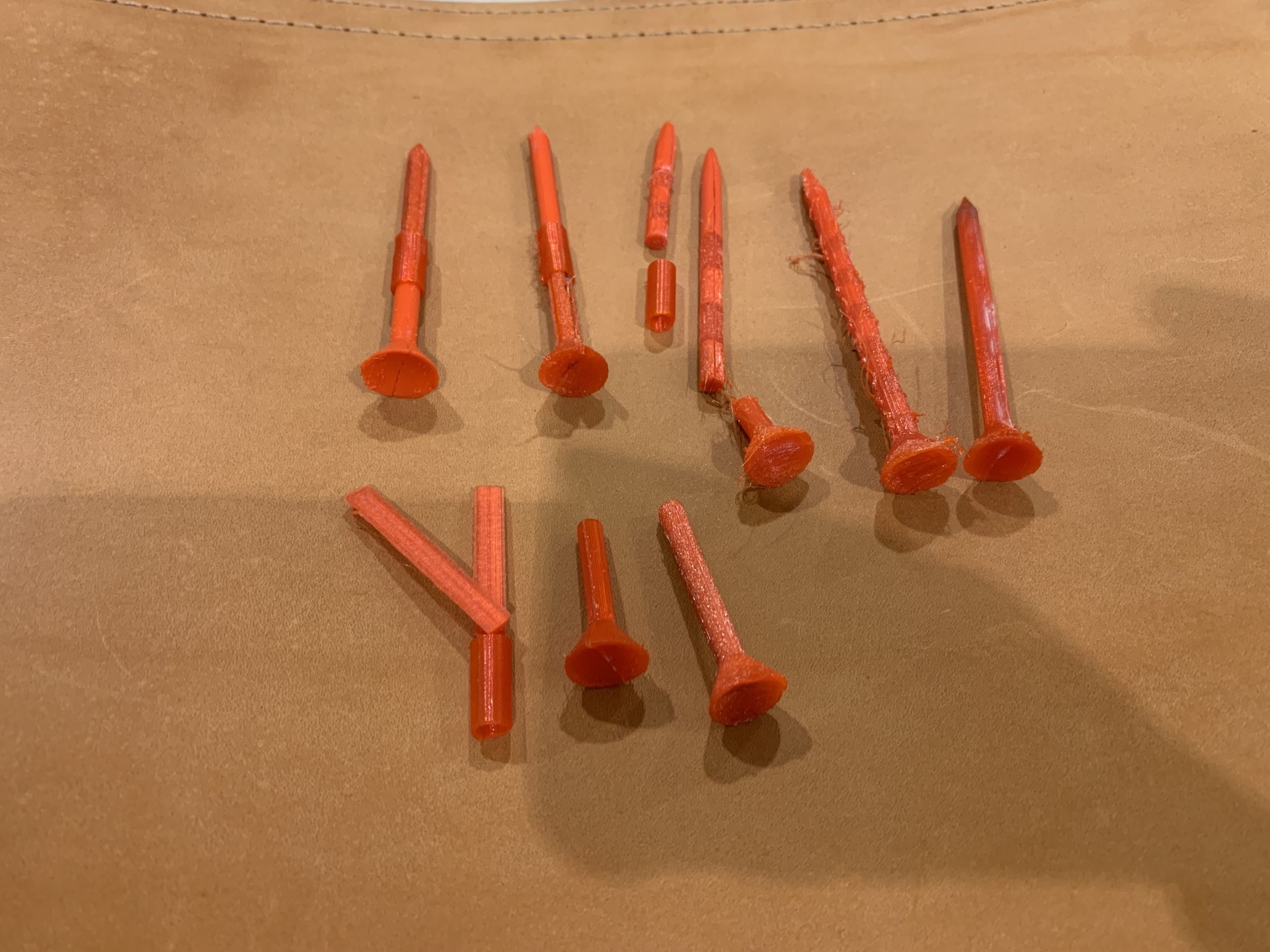Golf Tee Redesign
They asked for a better tee hoping to get a few extra yards from their drives.
When my younger sister came home one day from the golf course frustrated that her tees kept breaking, I wondered why an unbreakable tee had not yet been invented. I researched patents and academic papers about different golf tee designs and materials. I aimed to create a tee that not only was unbreakable but also one that would improve the golf ball’s performance.
I started this project by asking the question: Does the material of a golf tee have an effect on the performance of a golf ball? My research suggests that the answer to this question is a yes. For some part, hard tees (like plastic ones) have a negative affect on the performance and soft tees (like wood) have a better impact on a ball’s performance. However there was still a negative impact on a golf ball’s performance when using a tee.
To approach this problem, I designed, developed, and tested a tee that is flexible enough to maintain or increase a balls range (compared to a normal tee) and is unbreakable when hit, but is not too flexible so as to not hold onto a ball. I went to mHUB, a manufacturing incubator in Chicago, to test different materials and shore hardnesses for the different tee designs I create to see if I could find one that met the goals.
My results were somewhat mixed. While the flexibility of the final tee designs (due to the modified/improved design and materials) mitigated the fragile and breakable nature of traditional tees, the lack of proper industrial grade (co)polymers and thorough/broad range testing inhibited the depth of my testing.






